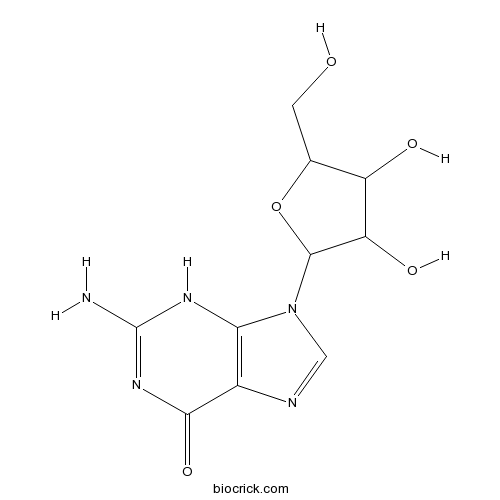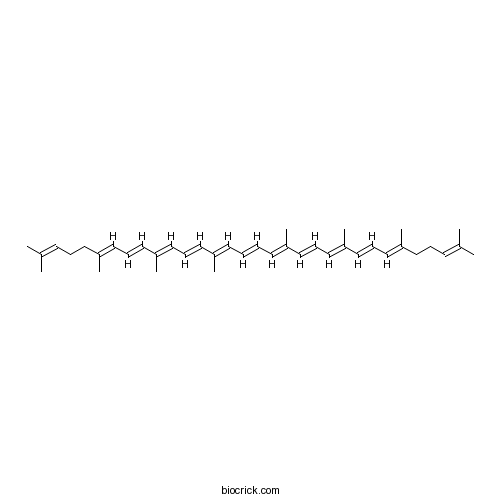Momordica charantia
Momordica charantia
1. The products in our compound library are selected from thousands of unique natural products; 2. It has the characteristics of diverse structure, diverse sources and wide coverage of activities; 3. Provide information on the activity of products from major journals, patents and research reports around the world, providing theoretical direction and research basis for further research and screening; 4. Free combination according to the type, source, target and disease of natural product; 5. The compound powder is placed in a covered tube and then discharged into a 10 x 10 cryostat; 6. Transport in ice pack or dry ice pack. Please store it at -20 °C as soon as possible after receiving the product, and use it as soon as possible after opening.
Natural products/compounds from Momordica charantia
- Cat.No. Product Name CAS Number COA
-
BCN2962
Guanosine118-00-3
Instructions

-
BCN5410
Lycopene502-65-8
Instructions

-
BCN8533
Cytosine71-30-7
Instructions

The effects of Momordica charantia (bitter melon) supplementation in patients with primary knee osteoarthritis: A single-blinded, randomized controlled trial.[Pubmed: 30057048]
Osteoarthritis is a common problem affecting the joints in the elderly, caused disability and consequently decrease the quality of life. The conservative treatment includes the usage of analgesia, but the use of herbal medicine is growing. Momordica charantia or bitter melon has been widely described to have anti-diabetic and anti-inflammatory effects. However, its effect on reducing pain in primary knee osteoarthritis is not well studied. We aim to determine the effects of Momordica charantia in reducing pain among primary knee osteoarthritis patients.
Study of selected therapeutic potentials of Momordica charantia fruit.[Pubmed: 30043567]
M. charantia extract partitioned in different solvents was assessed for antioxidant (2, 2-diphenyl l-picrylhydrazyl), total phenolic contents (TPC), total flavonoid contents (TFC), antiglycation, alpha amylase and acetylcholinesterase inhibitory activities along with cytotoxic, thrombolytic and antibiofilm potentials. Most effective antioxidant fraction was n-hexane with TPC and TFC, highest in n-butanol and ethanol fractions, respectively. Ethyl acetate fraction showed maximum glycation and alpha amylase inhibitions and optimum acetylcholinesterase inhibition was by ethanol fraction. Fractions exhibited significant hemolytic and thrombolytic efficacies and bacterial growth restraint. The present research reveals some medicinal potency of M. charantia.
Complete genome sequences of two gemycircularviruses associated with non-cultivated plants in Brazil.[Pubmed: 30032448]
Gemycircularviruses (genus Gemycircularvirus, family Genomoviridae) are single-stranded DNA viruses that are spread around the world in association with several organisms and environments. In this work, we identified two gemycircularviruses associated with two non-cultivated plants in Brazil, Momordica charantia and Euphorbia heterophylla. Both viruses display the general genome structure of gemycircularviruses. The virus isolated from M. charantia showed the highest nucleotide sequence identity with Pteropus associated gemycircularvirus 5, and an atypical structure consisting of a hairpin embedded in the major stem-loop was observed in the intergenic region. The virus from E. heterophylla showed the highest nucleotide sequence identity with Odonata associated gemycircularvirus 1. Phylogenetic analysis groups the two new viruses together with other genomoviruses of the genus Gemycircularvirus.
Characterization of bio-based plastic made from a mixture of Momordica charantia bioactive polysaccharide and choline chloride/glycerol based deep eutectic solvent.[Pubmed: 29944943]
None
Emerging antitumor activities of the bitter melon (Momordica charantia).[Pubmed: 29932035]
Bitter melon or bitter gourd (Momordica charantia) is a common vegetable in Asia and it is distinctive for its bitter taste. As an ingredient in folk medicine, research from different laboratories in recent years supports its potential medicinal applications with anti-tumor, anti-diabetic, anti-HIV activities in both in vitro and animal studies. In this short review, we summarize herein the recent progress in the antitumor aspect of bitter melon with a focus on the underlying molecular mechanisms. Further mechanistic studies as well as clinical trials are necessary to further verify its medicinal applications.
Correction to: GLP-I secretion in healthy and diabetic Wistar rats in response to aqueous extract of Momordica charantia.[Pubmed: 29895267]
Following publication of the original article [1], the authors reported that there was an error in the acknowledgements.
Evaluation of Bitter Melon (Momordica charantia) Cultivars Grown in Texas and Levels of Various Phytonutrients.[Pubmed: 29888551]
In the U.S., Momordica charantia, is relatively unknown and usually found in specialty markets. In this study, cultivation of five bitter melon cultivars grown in field conditions in College Station, Texas, was evaluated. Additionally, ascorbic acid, amino acids and phenolic compounds were quantified from various cultivars grown at different years.
Correction to: GLP-I Secretion in Healthy and Diabetic Wistar Rats in Response to Aqueous Extract of Momordica charantia.[Pubmed: 29875021]
Following publication of the original article [1], the authors reported that there was an error in the acknowledgements. In this Correction, the incorrect and correct acknowledgements are shown.


